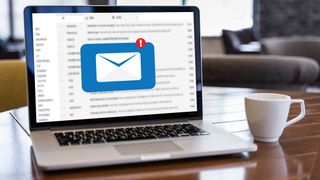Trying to tell if an email is spam isn’t always as simple as it sounds. Hackers and spammers are becoming increasingly more advanced with the ways in which they target people to find out personal information or financial details.
Knowing the difference between a genuine email and a fake one is really important for protecting yourself, your computer, and your banking information. Many scammers will pose as a bank or an established organization and the emails they send can, at first, appear very realistic if you’re not sure of the telltale signs they are spam.
Regardless of whether you use one of the best free email services or not, here are some helpful tips on how to tell if an email is spam or not.
1. Look at the sender’s email address
Many spam emails will look fairly normal initially, as they might mirror a larger company’s branding and seem legitimate. One of the easiest ways to decipher whether the email is spam or not is to look at the sender’s email address. A legitimate email from a business, shouldn’t come from a free email service address such as Yahoo, Hotmail, or Gmail, and there shouldn’t be a bizarre string of numbers in the email address either.
2. Look at the information the sender is requesting
Your bank should never email you to request sensitive financial information from you. It’s best to be very wary of emails that are asking you to fill out your details, provide information about your bank accounts, or request you do something right then and there.
So, if you get an email that asks you for any personal information, no matter how legitimate it might seem, delete it right away. Personal information is only meant to be entered in secure, encrypted forms, not emails where anyone and everyone can get their hands on your information.
3. Look at the greeting
If a legitimate company wants to reach out to you via email, like your bank, for example, they will have your personal details so will address you with your first name. Spam emails will likely begin with a generic, ‘valued customer’ greeting or even just a ‘good morning’.

4. Look at the content of the email
Be wary of any emails that include links. Most companies tell you what to do, but they never direct you to where to do it with a link. Also, rampant grammatical and spelling errors within the body of an email are good signs that it’s spam. Spammers don’t care enough about the actual messages they’re sending to take the time to make them make sense.
5. Look at the images
Finally, take note of the quality of the images used in an email. Many spam emails will contain poor quality and low-resolution images, which is a clear sign the email might not be legitimate. Likewise, if a company logo is used, inspect the quality of it and see if it’s a knock-off of a big company or bank.

